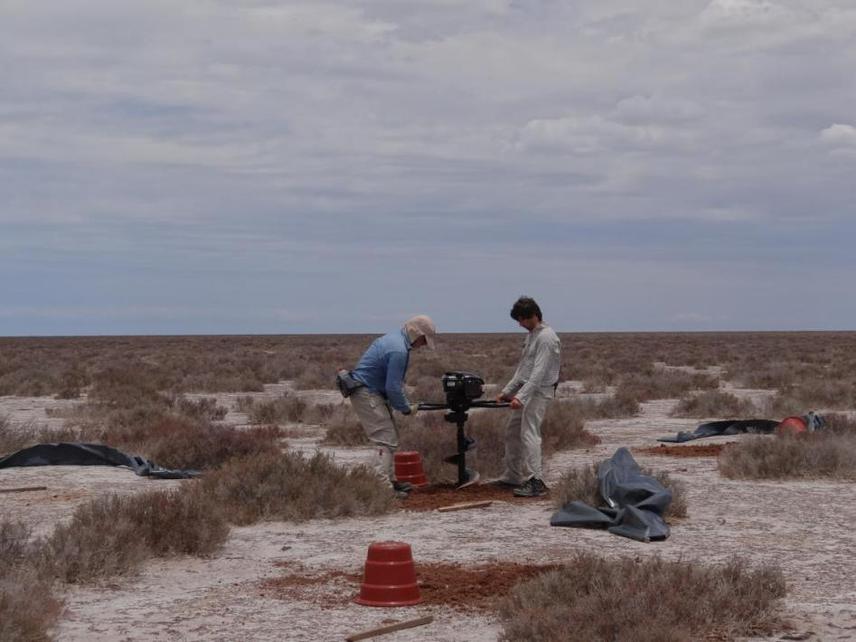Nicolás Pelegrin
Other projects
26 Sep 2013
Contributions from Science and Social Awareness for the Conservation of Chaco Reptiles in Argentina
We aim to determine the reptile fauna of Salinas Grandes and to relief the pressure on local lizards and snakes through educational activities.

Setting the traps to capture lizards and snakes in Salinas Grandes reserve. The drilling machine was bought with our first RSG!!
One of the results of my first RSG (“Contributions from science and social awareness to the conservation of Chaco reptiles in Argentina”) was that people from rural villages have a lot of misinformation about lizards and reptiles, which lead them to kill almost every reptile they find near their houses or in the field. Moreover, kids usually kill lizards for fun with home-made slingshots, and they proved to be extremely precise even at medium-long distances (~15m) so they can be a real threat for lizards. The magnitude of these killings is unknown, but in areas with endemic species it could be a serious conservation issue.
One of the most interesting Chaco locations is Salinas Grandes, in Central Argentina. Salinas Grandes (about 6000 km2) is the second largest salt plain in South America after Salar de Uyuni (Bolivia, about 10000 km2). It is located in the centre of Argentina (30°2’S, 65°2’W), in the border among Córdoba, La Rioja, Catamarca and Santiago del Estero provinces. Climate is semiarid, with seasonal rainfalls as low as 300 mm/year, and high temperatures that can reach 50°C in Summer. This huge salt plain harbours an almost unknown fauna from the Chaco, Monte and Patagonia, including some endemic species like the Chalchalero Viscacha Rat (Salinoctomys loschalchalerosorum, Octodontidae; Critically Endangered), the Fairy Shrimp Hunting Beetle (Cicindis horni, Carabidae; No evaluated), the Córdoba Salt Lizard (Liolaemus ditadai, Liolaemidae; Vulnerable). As long as we know, this lizard is only distributed in a small area in the northern border of the salt plain near two small towns, where salt is extracted for human consumption. Many citizens live in poverty, with little or no access to education and health service. In this context, educating about faunal diversity and safety actions will be important to improve their life quality.
We propose to sample reptiles in the Salinas Grandes Multiple Use Reserve, a huge salt plain where endemic, threatened, and poorly known species share their environment with people and their activities. We will evaluate people’s knowledge about reptiles, estimating the number of killings/week. We’ll conduct educative actions to increase people's knowledge and awareness on herpetofauna, aiming to relief the pressure on local lizards and snakes.